The Rise of Cyclors: The high-wattage cyclists who power America's Cup teams
How many watts does it take to power a 75-foot carbon-hulled sailing yacht at speeds over 55 mph?
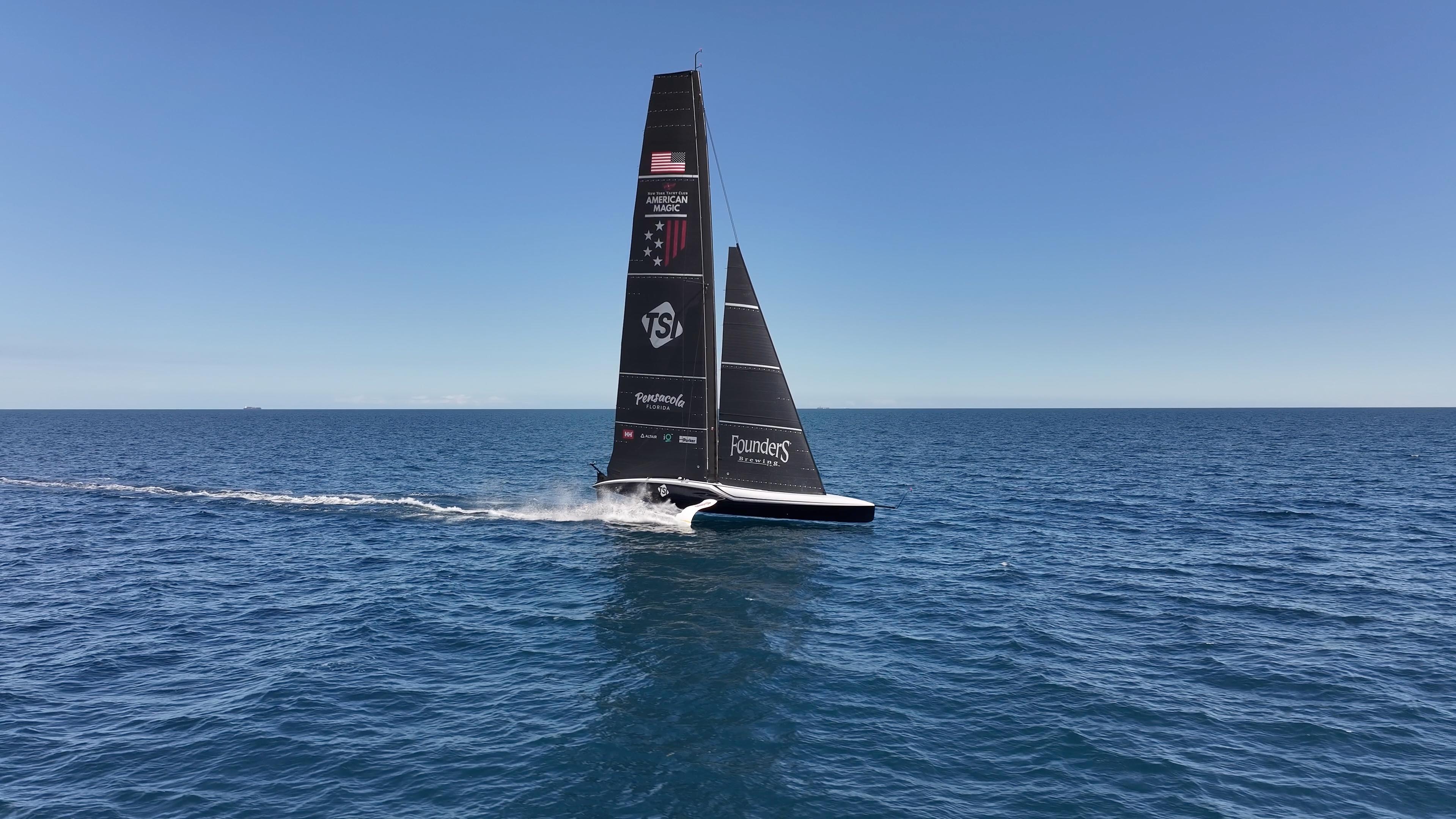
A new breed of endurance athletes is answering that question and leaving a historic impact on International sailing.
It would be velominati folly bordering on bicycling blasphemy to suggest that a sailor possessed the force, fortitude, and finesse to conquer Paris-Roubaix's iconic cobbled secteurs. In late October 2024, in the waters off the coast of Barcelona, a new breed of cycling strongmen will play a critical role in reclaiming a trophy older than the blue-gray granite cobble that the Spring Classic winner will hoist overhead.
The America's Cup is the oldest international competition still in existence, dating back to 1851. The Cup lay in wait at the home of the defender, the New York Yacht Club (NYYC), until 1983, when Royal Perth Yacht Club's Australia II broke the longest winning streak of any sport, 24 defenses in 132 years.
The Cup is a match race between sailing yachts from two rival clubs: one from the "defender" who earned the honor in the previous edition and the other from a "challenger" seeking to claim one of the most coveted trophies in sports history. The last defense occurred in 2021.
The America's Cup doesn't follow a fixed schedule; the champion retains the title until a challenger emerges, initiating a technological, strategic, and highly secretive arms race for sailing supremacy.
The epic feat of challenging man and machine to bring the Cup back to its hallowed home at the NYYC will require a well-choreographed ballet of sailboats, sailors, and cyclists. Yes, cyclists!
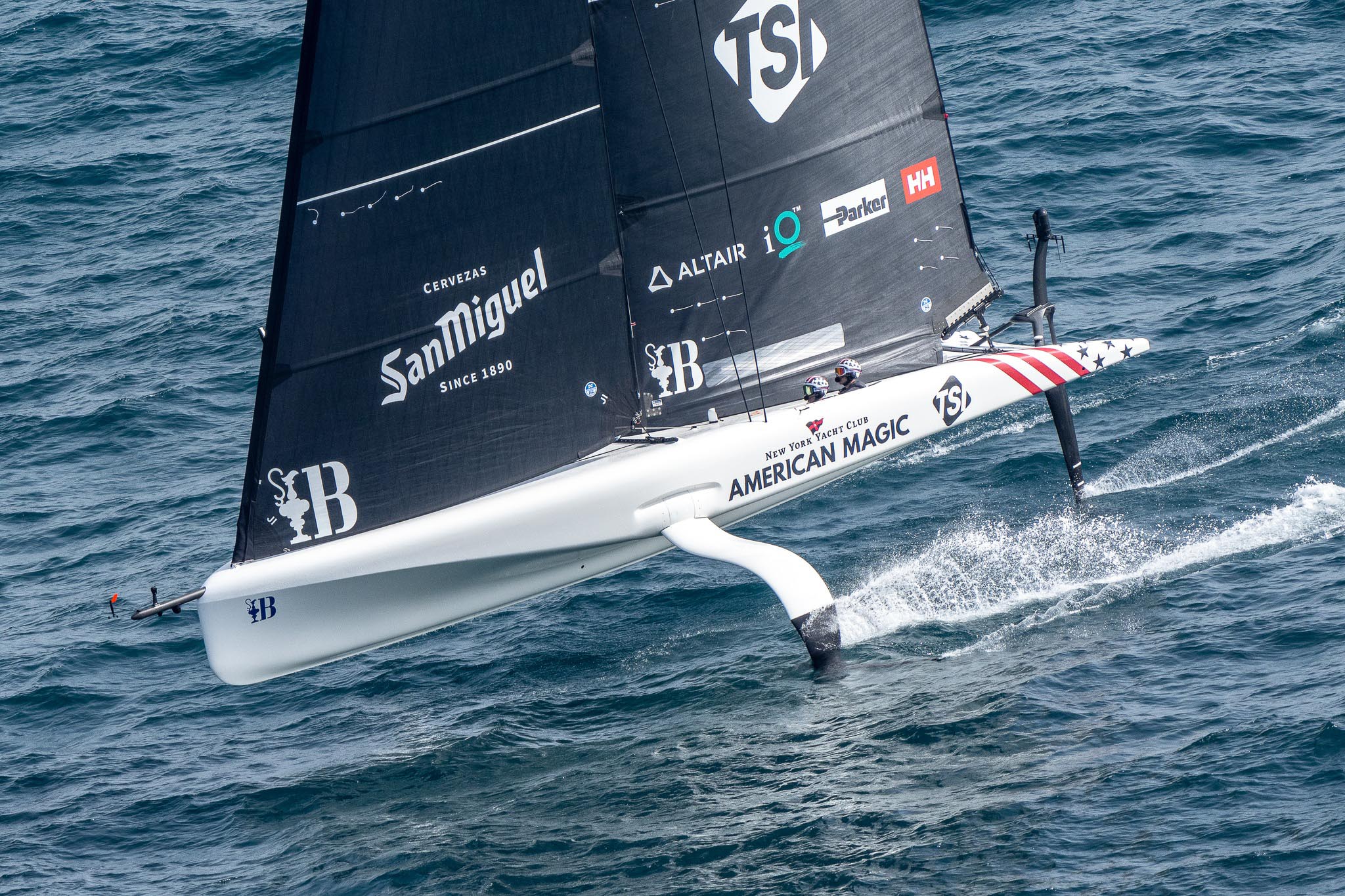
American Magic's AC75 Patriot, a testament to the fusion of technology and athletic performance, represents the pinnacle of sailing innovation. Dubbed the "Formula One" of sailing by the team, it even features a race car-inspired steering wheel and carbon hull.
The latest race content, interviews, features, reviews and expert buying guides, direct to your inbox!
Traditionally, the hydraulic power needed to operate the mast, winches, and trim the sails necessary to propel the 75-foot hull at speeds exceeding 50 knots relied on crew members known as "grinders," who manually operated hand cranks. However, engineering ingenuity has replaced these hand cranks with a leg crank mechanism akin to a fixed-gear bike drivetrain, and the athletes who operate them are now called "cyclors."
"What we're finding is a 30 to 50 percent power increase using the lower body as opposed to the upper body," explains Ben Day.
Everything above the deck of an America's Cup boat must be human-powered. Emirates Team New Zealand's innovative interpretation of the rules harnessed the increased force production of their crew’s glutes, quads, and hamstrings to victory in 2017, introducing cyclors to the sailing world.
Day, a former Pro Cyclist and ProTour Team Coach, now leads the charge as American Magic's Head of Performance. His task? To identify and train the elite cyclor squad that will challenge Emirates Team New Zealand in 2024. His unconventional role began in 2022 when he recognized that recruiting athletes who fit the cyclor mold wasn't like filling a Tour de France team.
"We needed to find very strong, robust athletes," said Day, because "This is not a power-to-weight sport; this is just an absolute power sport."
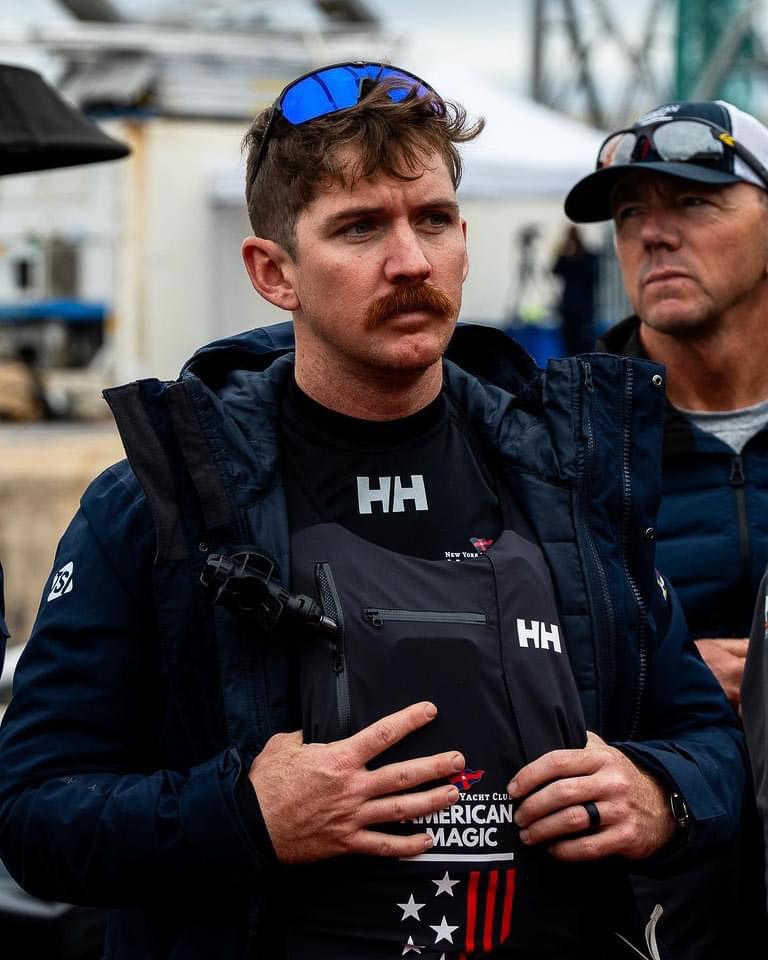
The America's Cup rules require a minimum crew weight for the four cyclors and the four afterguard that pilot the vessel. With a limited pool of 90 to 105 kilogram (198 to 230 pounds) and 198 cm (6'6") cyclists to choose from, Day broadened his search to other endurance sports.
That's where he found the 93-kilogram and 192-cm champion swimmer from Boston, Colton Hall, and the 95-kilogram and 191-cm Olympian and K-1 kayak American record holder, Tim Hornsby. The remainder of the ten-man cyclor squad includes a diverse group of competitive rowers, sailors, track athletes, and professional cyclists, such as the most diminutive member of the cyclor team at 88 kilograms and 175 cm, World and National Champion Ashton Lambie.
"I still consider myself a professional cyclist! I’ve just traded the wooden boards of a velodrome for a carbon racing yacht," quips Lambie.
As Day explains, the recruitment drive testing protocol was no laughing matter.
"The testing was a 30-second effort, a four-minute effort, and a 20-minute effort within a one-hour protocol. We were starting to talk to people if they could produce over 1100 watts for 30 seconds, over 520 to 540 watts for four minutes, and over 440 watts for the 20-minute piece. So that's our marker of when we were opening up conversations with people to understand how they might fit into the team environment here and whether they had what it takes to contribute."
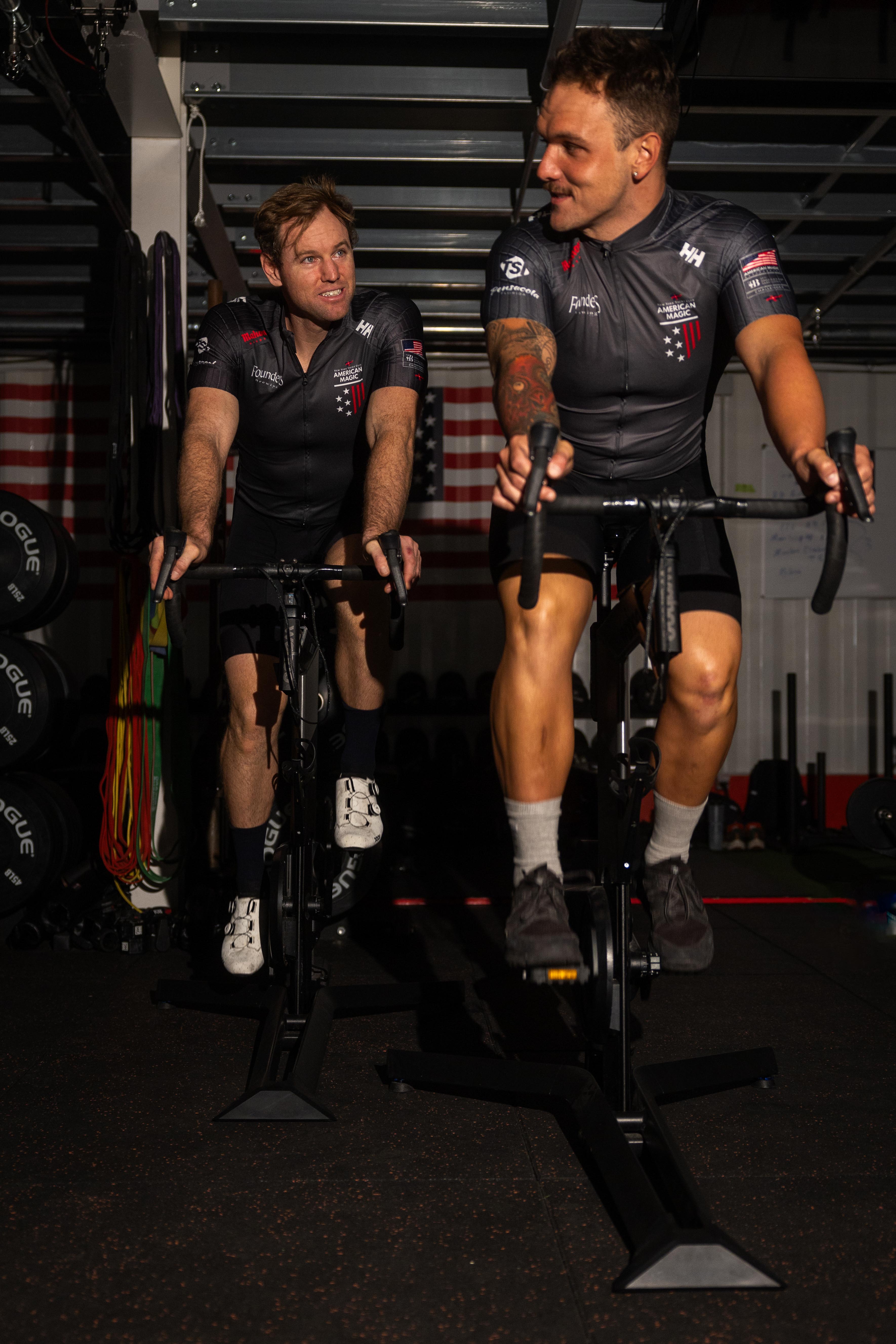
American Magic's AC75 demands significant power to perform maneuvers, such as tacking, jibbing, and turning corners. The cyclors can't top off the hydraulic system and stop pedaling to take a break during races, so athletic performance, strength, and endurance directly affect race outcomes.
Their swift trimming of the sails improves the boat's agility and responsiveness, and the harder and faster they pedal, the more rapidly power is available.
The yacht's hydraulic accumulator tank stores the pressure generated by pedaling, rather than the pedalling directly moving anything mechanically by itself. A hydraulic actuator converts this pressure into force. As the pressure in the tank is used, the cyclors must pedal harder to maintain it. The fuller the tank, the harder it is to add more pressure, and the harder the cyclors must pedal.
The American Magic Team partnered with SRAM to assist in designing the flywheel-less drivetrain, which they coupled to the AC75's hydraulics and directly to the rigging for certain maneuvers. Without inertia or momentum, the cyclors describe pedaling against the pressure of the filling tank as "pushing and pulling a dead weight."
Envision grinding up The Muur on a single-speed tandem track bike tethered to a giant rubber band dragging the AC75's 7-ton hull. Then, respond to Mathieu van der Poel's 2021 race-winning attack.
The team reports that the two-and-a-half-year development and build process totaled over 108,000 design hours and 65,000 construction hours. For the next generation AC75 sailing vessel, the USA has opted for recumbent cyclors, which have the rider in a laid-back reclining position but also facing aft rather than forward. They positioned two cyclors on the port and starboard side of the hull, with the drivetrains linked in tandem.
Day describes the 20 to 30-minute races as "very much a stochastic, undulating over-under effort, like a criterium."
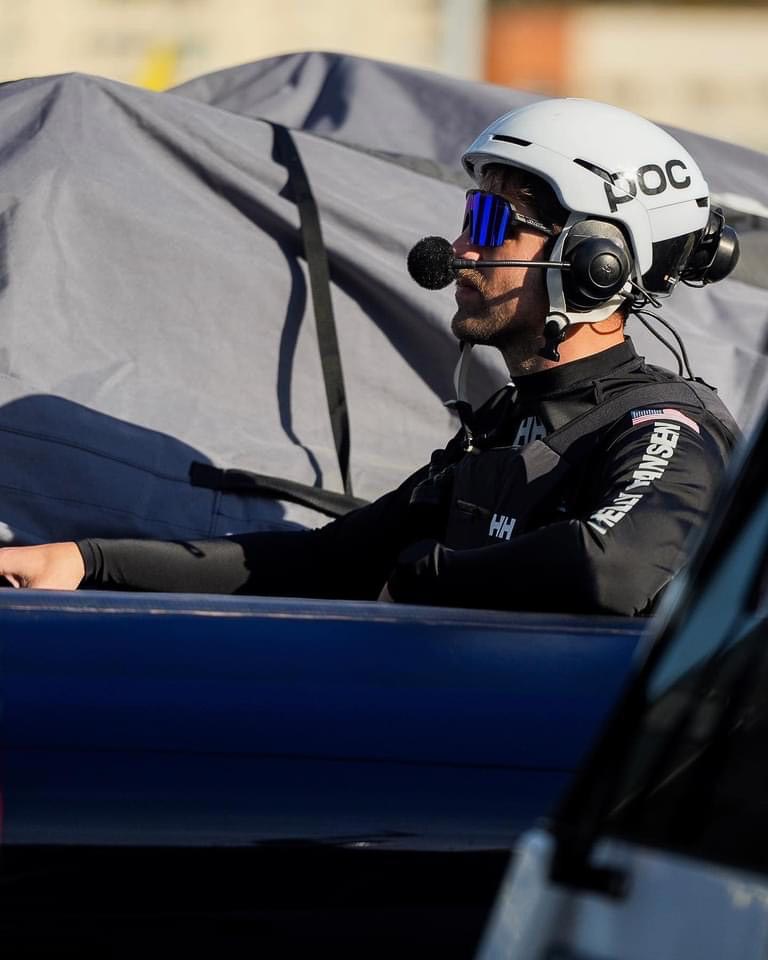
During the pre-start period, the cyclors will perform multiple high-intensity anaerobic efforts when the boats are jockeying for position. The front-loaded race demands include sub-threshold efforts during straight-line sailing interspersed with high-intensity bouts while maneuvering. A cyclor will routinely have a normalized power in the 350 to 450 Watt range for the 700 kilojoule effort.
Day was tight-lipped when asked to reveal specific details of his cyclor training regimen, only saying, "It depends." He did reveal that the athletes train upwards of 15 to 20 hours a week on the bike and in the gym.
He quickly pointed out the value of American Magic's partnership with Wahoo Fitness and the 20 Kickr bikes and 10 Kickr smart trainers they provided to the team.
"Wahoo is the best indoor trainer brand in the World. These are big, muscular guys, and during several hours of riding, they will do everything they can to destroy them, and they haven't won yet. We do the hardest testing of this equipment in the World. We're up to 20 hours a week of intense riding and multiple daily sessions on these things."
Day also relies on the power meter's precision to guide the cyclor training plan and ensure that the crew meets the parameters necessary to sustain maneuvers aboard the AC75.
"We needed reliability, accuracy, and high-performance products. These athletes produce very high numbers, so it was crucial to have strong support throughout their training and competition."
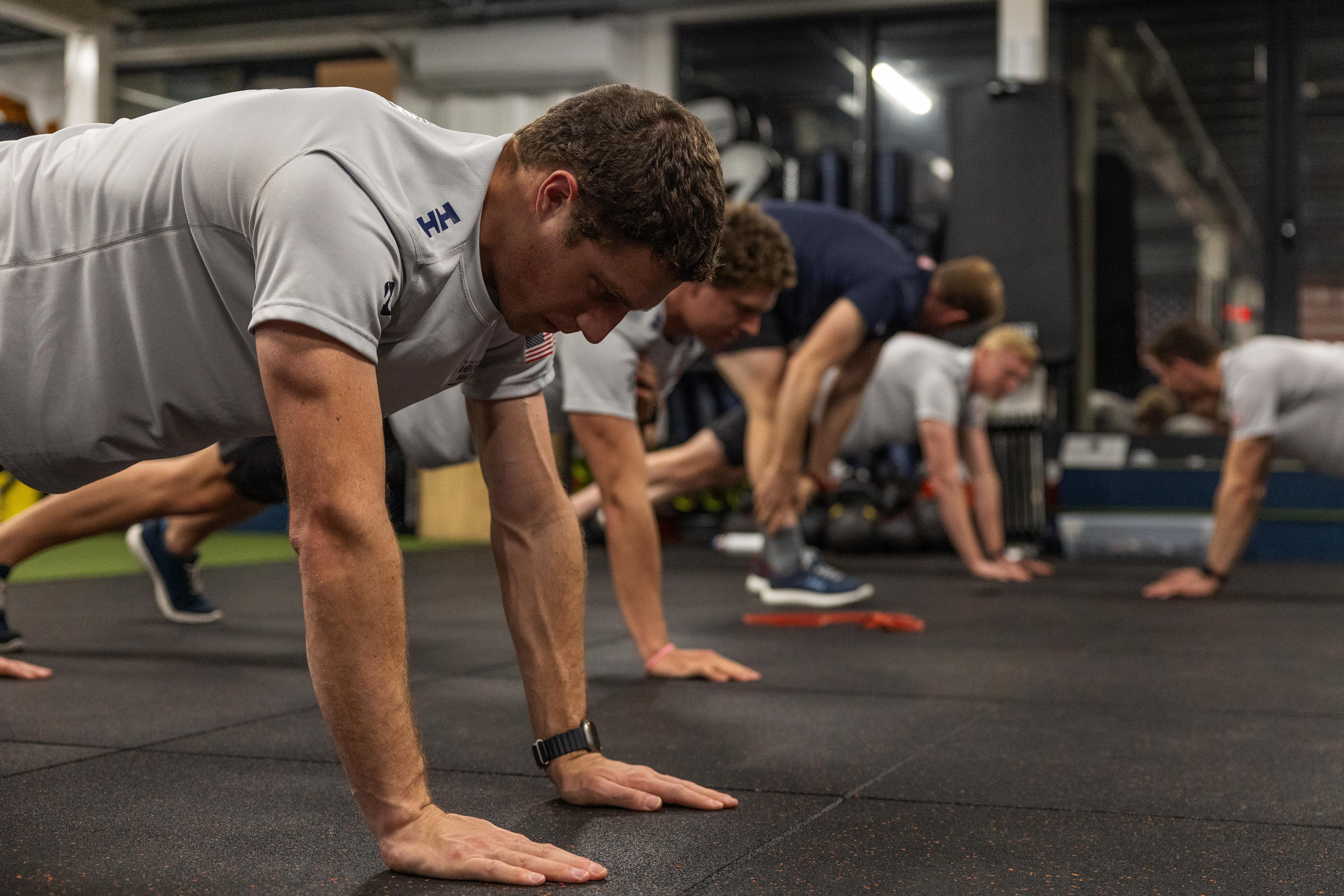
The America's Cup challengers include INEOS Britannia from Great Britain, Alinghi Red Bull Racing from Switzerland, Luna Rossa Prada Pirelli Team from Italy, Orient Express Racing Team from France, and NYYC American Magic from the United States. Cyclors will be powering the pedals beneath the deck of every vessel.
Excitement mounts for the upcoming Preliminary Regatta in Barcelona from August 22-25, where all six AC75s will compete for the first time. Afterward, attention turns to The Louis Vuitton Cup from August 29 to October 7, where American Magic aims to secure their spot in the America’s Cup match from October 12-27 against defenders New Zealand.
Where will the achievement rank for the highly decorated American Magic cyclor crew members?
Unlike anything else, says Hall. "When we win the Cup, this will be the most prestigious of my athletic achievements. It is the oldest trophy in international sport and is much more than just a trophy or personal accomplishment."
For the talented athletes of the American Magic cyclor crew, the daily training to excel in their field is an unstoppable force. The cyclor challenge is a crowning career achievement driven by a pursuit of excellence and new experiences. Being part of the first group of American cycling athletes to transition to the top of sailing is a historic achievement beyond comprehension.
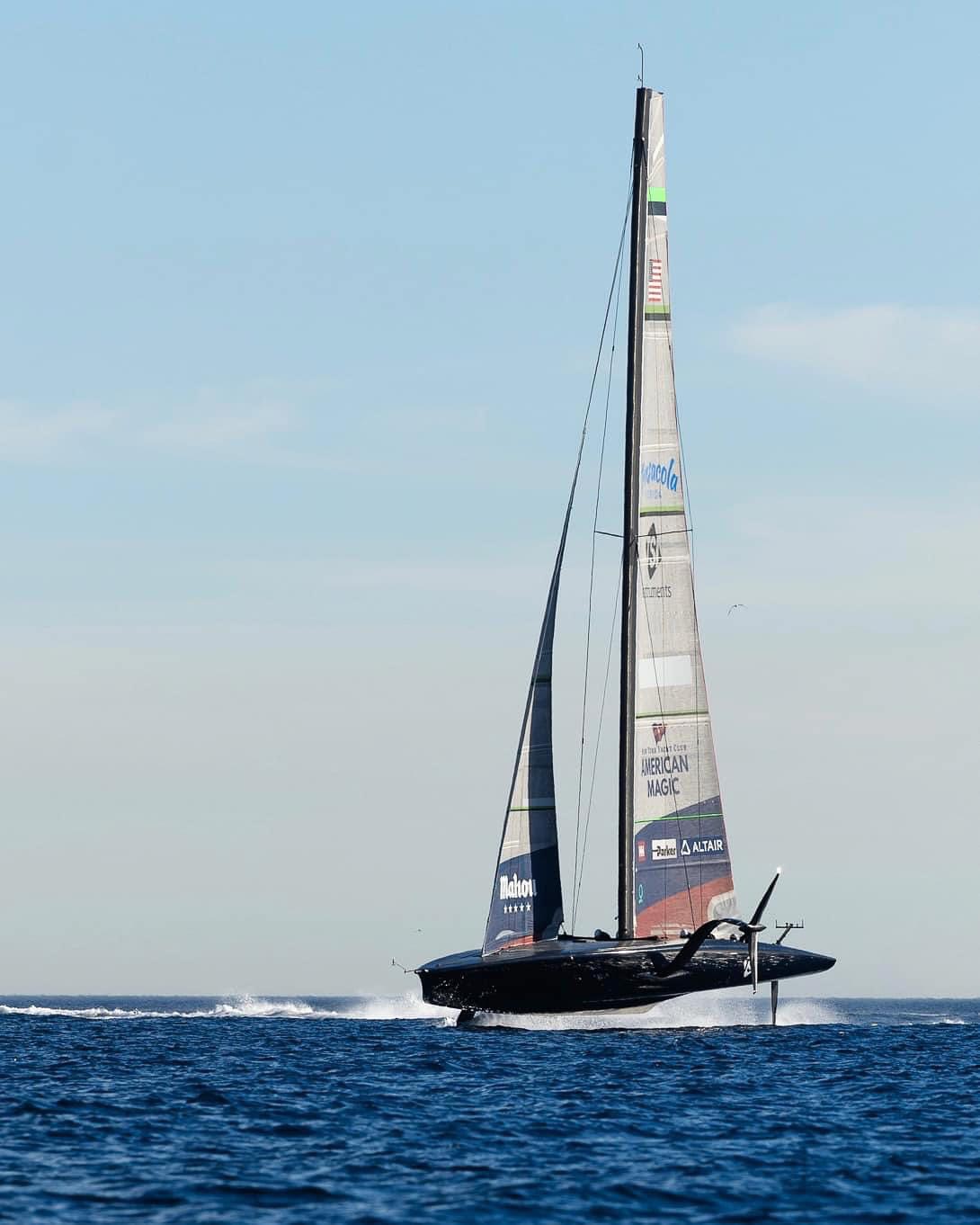
"The America’s Cup is a unique opportunity to be on a team with so many people serving various roles, all in pursuit of bringing the Cup back to the US. The sense of unity and nationalism is also quite special," shares Hall
Though seemingly unrelated, the synergy between cycling and sailing has sparked an intriguing exchange of technology and scientific knowledge. Integrating cyclors into sailing reflects a forward-thinking strategy, allowing a technology-driven sport to seamlessly incorporate advancements from a different discipline.
Ashton Lambie agrees, saying, "The Cup is a huge achievement as far as any sporting career. I'm no stranger to working towards a big goal over several years, but the dynamic goal of "Winning the Cup" makes this one incredibly special."
The dedication, determination, and sense of pride that Day and his cyclor squad personify, often reserved for cycling champions, is evident and echoed by Hornsby, who summed it up by saying, "It's time to bring the Cup back!"
A physical therapist with over 25 years of experience, Christopher Schwenker is on a journey to give back to the cycling community for rewarding experiences and fulfilling relationships through the pages of his virtual cycling blog, The Zommunique’, and his cycling-related non-profit, The DIRT Dad Fund.
